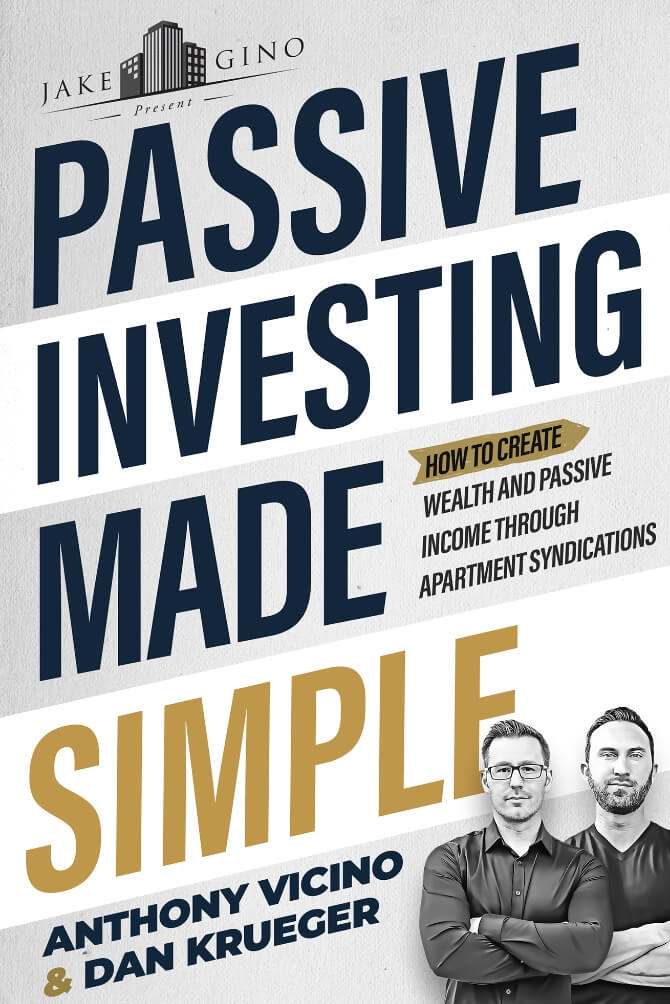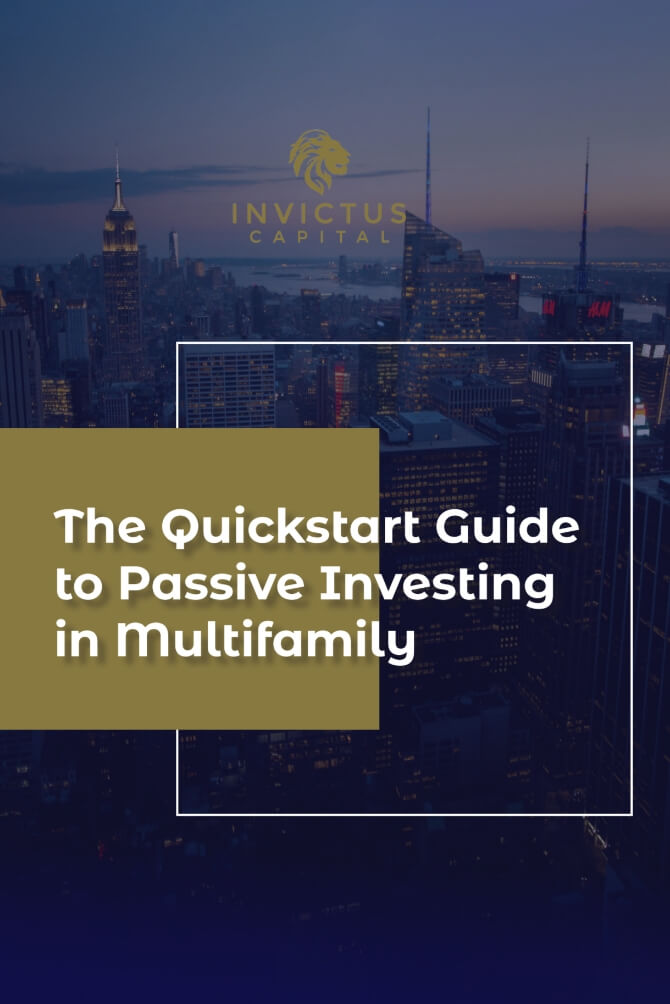For today’s episode, we will be discussing what to do when you have multiple deals to compare.
This week we’re covering something for those who are underwriting numbers fanatics.
We will talk about these things…and more in another episode of Multifamily Investing Made Simple in under 10 minutes.
Tweetable Quotes:
“we’re always kind of wondering internally, like, what are they looking at on their ends? How are they making this work? Or do they have some sort of business plan that they’re going to execute that we didn’t even think of?” – Dan Kreuger
“what it was is a classic mistake that a lot of new underwriters make, which is they assumed from day one that they would be able to go and achieve one hundred percent occupancy and do their unit turns in the first quarter” – Anthony Vicino
“They didn’t just add a line item in revenue for the bill back. They also decreased their expense line item. Hmm, right? So you’re not supposed to double-dip.” – Dan Krueger
LEAVE A REVIEW if you liked this episode!!
Keep up with the podcast! Follow us on Apple, Stitcher, Google, and other podcast streaming platforms.
To learn more, visit us at https://invictusmultifamily.com/
**Want to learn more about investing with us?**
We’d love to learn more about you and your investment goals. Please fill out this form and let’s schedule a call: https://invictusmultifamily.com/contact/
**Let’s Connect On Social Media!**
LinkedIn: https://www.linkedin.com/company/11681388/admin/
Facebook: https://www.facebook.com/invictuscapitalventures/
YouTube: https://bit.ly/2Lc0ctX

How to not Compare Two Deals
Anthony Vicino: [00:00:15] Hello and welcome. No, what, Dan. You do the intro.
Dan Krueger: [00:00:19] Oh, so do you under the bus, and welcome to multifamily investing. It’s simple. I am Diane Kruger. Your fearless leader joined by Damien Anthony and funny Tony.
Anthony Vicino: [00:00:35] No, never Tony.
Dan Krueger: [00:00:37] Sometimes aren’t sometimes that guy. One person, I know who calls you that and I’m not your girlfriend. So yeah,
Anthony Vicino: [00:00:43] She, her, and my dad are really the
Dan Krueger: [00:00:44] Only ones. I can’t mess with that. No. So you know who we are. Diane Kruger CNN. Multifamily investing is made simple. We take the complexity out of real estate investing so that you can get started today. I’m super pumped because we’re going to be talking about something that I appreciate a ton as an underwriting numbers fanatic. But I think a lot of people this is going to be brand new information for and that is, you know, we’re going to compare two deals, right? We’re going to compare two deals and this is coming from a story that a friend of yours shared. I think when you were doing a podcast, yeah. And this is, I mean, it’s perfect.
Anthony Vicino: [00:01:23] Yeah. So here’s the let me lay the context here, guys are you’re going to have multiple deals at some point and you’re going to need to try and compare them. Like, Should I invest with these operators in this deal or this operator in this deal? How do I tell which deal is better? And this is as yeah. Well, this isn’t as simple as you might imagine, because one is you can’t quantify risk in a universal way. Right? There really is no universal definition of risk because how you define it and how I define it is going to be a little bit different. And so how do we measure both the returns, but also the potential risk of an investment? This is really this is the big question mark, and I was on a podcast the other day and the host shared this fantastic example, this fantastic story and it goes like this. He had this deal, this property comes across this table. They underwrote it, they looked at it and they’re like, You know what? This doesn’t look that good. We can’t. The numbers just don’t really make sense. It’s not that fantastic of a deal. So they passed and they went on and they found a deal a couple of weeks later and this deal looked great, looked awesome. And they sent it out to their investors and it was projecting a nice 16 percent IRR.
Anthony Vicino: [00:02:35] Nice and conservative number, it looks really good. And one of his investors comes back and he goes, You know what? I have this other deal on my plate. They’re projecting twenty-two percent IRR, so I’m going to go with that deal and this my buddy, he goes, Oh, that’s fine, can you? Would you mind sharing the marketing package on that other deal? I love seeing other opportunities, other deals, and saying, like how other operators are presenting and we do the same thing. We love seeing this stuff. So he sends over the information, and it’s the deal that the guy passed on just a couple of weeks before those same deal that they had already underwritten. And somehow, when he underwrote the deal, they were coming up with like a 12 or 13 percent IRR. But now this other operator was projecting 22 percent. Where did that difference come from? And. And that’s the big question, right? Is like how one operator projects on a deal is completely different than another one. Now, as they dove into this one, they started to realize some big mistakes had been made from an underwriting perspective. But let’s put that aside for now and just talk about the fact that two different operators underwrote the same deal and had a 10 percent delta. So if you’re just looking at returns that would not paint a very full picture.
Dan Krueger: [00:03:49] Yeah. And I love this because we’ve seen this so many times where we’ve looked at a deal, you know, things from 50000 feet kind of looked fine location, the type of building. And then when we really looked at, OK, what’s the upside and what’s the potential downside here and we really try to underwrite it, it just didn’t work for us and we passed on it and then we see that deal get picked up by somebody else that we’re aware of in the market at a much higher price than we were thinking of even entertaining, even when we didn’t even really think it at that price. And then they’re running with it. And so we’re always kind of wondering internally, like, what are they looking at on their ends? How are they making this work? Or do they have some sort of business plan that they’re going to execute that we didn’t even think of? Was there some sort of reposition angle? Usually, there’s not, and usually, we’re going to dive into it here, but usually, it’s just. Lax underwriting, I guess, I don’t know. That’s right, I think
Anthony Vicino: [00:04:42] That’s a good word, yeah. Well, it’s really interesting because when we look at these deals, we don’t go into other operators’ underwriting assuming that they made a mistake or did anything wrong. We look at it through the lens of like, OK, what did we miss? What? Like, where did they see the opportunity that we didn’t? Because we want to level up and we want to get better and we want to take that. Usually, though, as you alluded, like, that’s not really what happens often. It’s just a difference in underwriting expectations, things around cap rate reversions or vacancy growth, vacancy rates versus rent growth numbers or, you know, all sorts of like how can we reduce the expenses? And in this particular deal that I was telling the story about my buddy, you know, what it was is a classic mistake that a lot of new underwriters make, which is they assumed from day one that they would be able to go and achieve one hundred percent occupancy and do their unit turns in the first quarter. And if you look at that, you’re like, Well, how is that possible? How are you going to get one hundred percent occupancy on day one and go do these renovations in the first quarter and you’re now having tenants in these units? You can’t do both simultaneously. Let’s forget for a second that you probably also can’t have a teleportation machine and magically have all your units just filled on day one. I think it’s
Dan Krueger: [00:06:02] A time machine actually is what you need that that would make the time machine, but that would make this business plan a reality. But I actually got an underwriting package sent my way by someone that we’re partnered with, and there was somebody that had done some underwriting for this individual on a deal that they were trying to kind of put in front of us as a group to see if we want to move forward with. And I got really excited because I always love to look at how other people underwrite deals. And unfortunately, I mean, this one was done by somebody a little bit newer. And so, you know, no problem with that. They weren’t out raising capital, I think for it. But I noticed just a laundry list of things that were wrong on this. This underwriting and the numbers that were on the package that was shot over were probably, you know, 17 to 19 percent IRR somewhere in there. And I got this laundry list, and the biggest things I found were one the exact same thing Anthony just mentioned. The rent premium was achieved immediately in year one for three hundred and sixty-five days. So from December 31st to January 1st, all the rents jumped by about one hundred and some bucks. Vacancy didn’t change as possible.
Dan Krueger: [00:07:09] Not possible, not possible. I saw another thing in there too. They had rubs, which is a really popular thing for people to incorporate where we, you know, bill back for utilities. But it was interesting. They didn’t just add a line item in revenue for the bill back. They also decreased their expense line item. Hmm, right? So you’re not supposed to double-dip? Yeah, so effectively, their utility costs went past zero because they have the income from the bill back and then all of a sudden their expense line item went away. And so I was like, That just doesn’t work unless you’re not going to pay the utility companies, which probably won’t go too well. And there was a laundry list of other things. The cap rates were, were suspect, and things like that. But the big one was just that. You know, that that rent increase. I think that’s really common. Even if you get one hundred percent of your units up to the market rent that you’re shooting for, it’s going to happen over the course of the year. And the total rent collected for that period isn’t going to total up to that new market premium because you’re going to get maybe nine months or eight months or six months of that higher rent.
Anthony Vicino: [00:08:08] And here’s why this is a common mistake that we see in underwriting is because a lot in this space, you know, syndications have become very sexy and a lot of people are getting involved in it. Pretty much every day people are jumping in. And what they’re using a lot of times for the underwriting are these boilerplate spreadsheets that are put out by these groups who are like, Hey, use our underwriting package. And that’s fine for getting like the back of the napkin understanding of the numbers and things. But what it doesn’t do is they’re usually not very sophisticated where you can break out this information and say, OK, in month three, we’re doing this mini-unit turns and this is what the rent premium month for it says you can’t lay it out like that. And so for the sake of simplicity, they just go in there like, you’re one boom. They put the number in. They’re not really thinking through the consequences of that. Now in our book Passive Investing Made Simple, we talk about a lot of tips and strategies for avoiding this as you’re vetting operators and vetting deals in particular. And I’ll give you one little tidbit that comes straight from the book, which is don’t look at the numbers and try to create the narrative yourself.
Anthony Vicino: [00:09:10] Ask the operator to tell you the story of how they’re going to do this because we’re humans. We think in stories, we don’t think in numbers very well. If I just started throwing out these numbers that we are going to do this many unit renovations and quarter one and we’re going to have this occupancy rate and we’re going to get this rent premium and all these things. I just start stirring up numbers that don’t tell you the story. If you try to tell me the story that from day one, we’re going to have. All our units are filled. And in the first quarter, we’re going to renovate all of our units and you start telling me that story. I’m going to go, wait a minute. I see a plot hole like you might not be an expert storyteller, but when you watch a movie, you see plot holes and you will see plot holes in operators deals when they start telling you what they’re going to do in a narrative format.
Dan Krueger: [00:09:59] Mm-hmm. Yeah. And I think the best kind of lens to try to look at deals through, especially when you’re newer to investing, is to go into a potential opportunity and try to break it. You might not really know exactly what questions to be asking, but if you could just ask enough questions, you’ll be able to tell if the operator is struggling to justify and struggling to explain how this business plan is going to unfold, and if they’ve got really well-thought-out answers for all of your questions. That’s usually a pretty good sign. But if you start probing and you’re not getting really well thought out, comprehensive answers that make a lot of logical sense, then there’s probably some red flags there and you need to dig a little bit deeper before you start throwing money anywhere.
Anthony Vicino: [00:10:41] Yeah, always. As a good rule of investing advice, here is always looking for reasons the deal won’t work. Don’t look for the upside. Look for the downside. It’s the classic. Take care of the downside. The upside takes care of itself. So look for reasons not to invest, try and sell yourself on why this is a bad deal. And if you can’t do it, if at the end of the day you make the most compelling argument for why you shouldn’t do the investment and you’re still like, OK, those are kind of weak reasons. That’s a good deal. That’s a good deal. Go do that deal. All right. So that’s going to do it for us, guys. I hope this sheds some light on this issue that you’re going to face at some point, which is you’re going to have two deals. You need to make a decision between the two of them. Which one should you invest in? Which ones should you take a hard pass? Hopefully, this saves you from making some big mistakes. But getting this book out? No guarantees.
Dan Krueger: [00:11:31] All the answers are in there.
Anthony Vicino: [00:11:32] The answer’s thirty to thirty-two percent of the answers are in the book Passive Investing Made Simple and again, we’ve got a very special deal going forward for you are beautiful, dear listeners. Go to the passive investing books. You can get the book for free, the physical book, not the digital, the physical book. We will mail it to you for free if you just pay to ship.
Dan Krueger: [00:11:50] That’s usually 20 bucks, right?
Anthony Vicino: [00:11:52] It’s a 20 dollar book, plus shipping that’s usually like twenty-two twenty-three twenty-five bucks. If you go and you pay, I think six bucks the passive investing books. We don’t make any money on this. We just want to spread the word. So even if you already know everything about passive investing, you got a friend or a family member or somebody that you like. This is the coolest thing ever, but they’re a little bit scared. They’re a little bit overwhelmed still, because it is scary and overwhelming at first. Get them a copy of the book. Mm-hmm. Do my favorite change the trajectory of their investing career? Yeah, yeah. Think about that. All right. So that’s kind of do it for us, guys. We appreciate you for taking some time out of your day to join us here. We will catch you next week.


